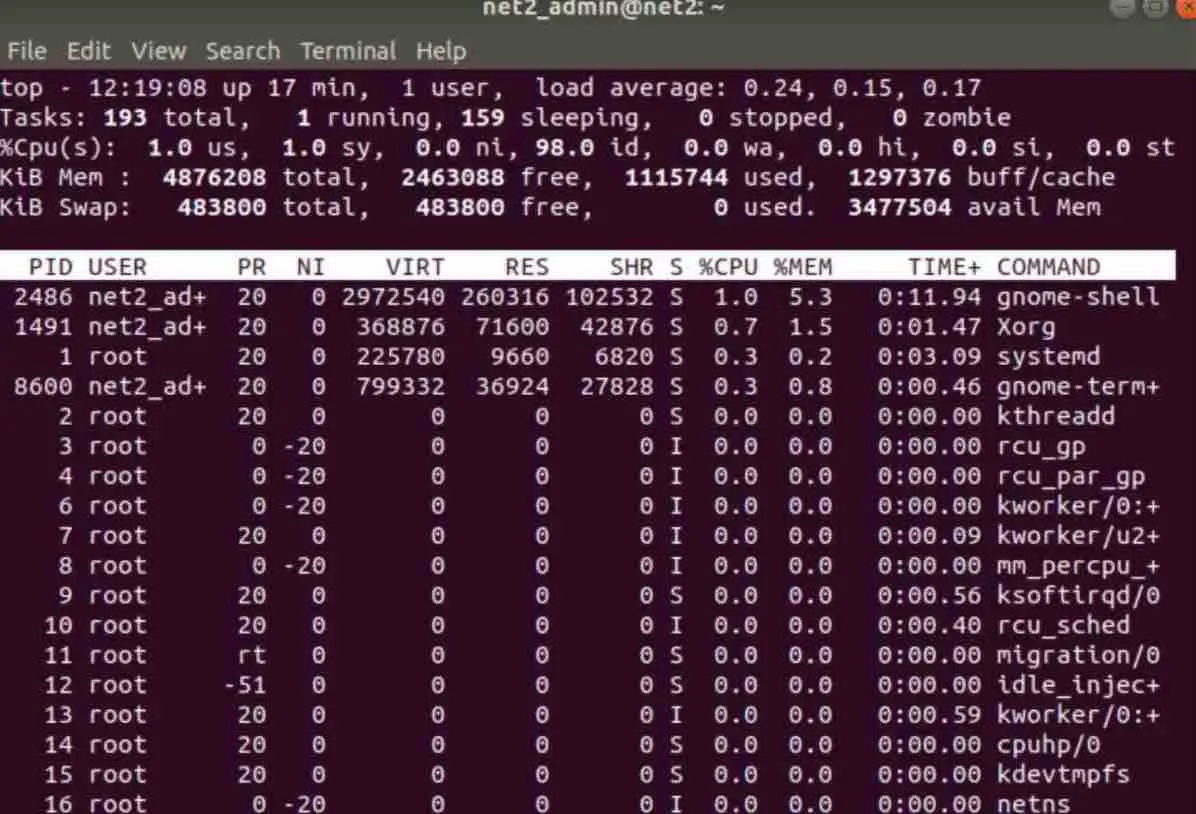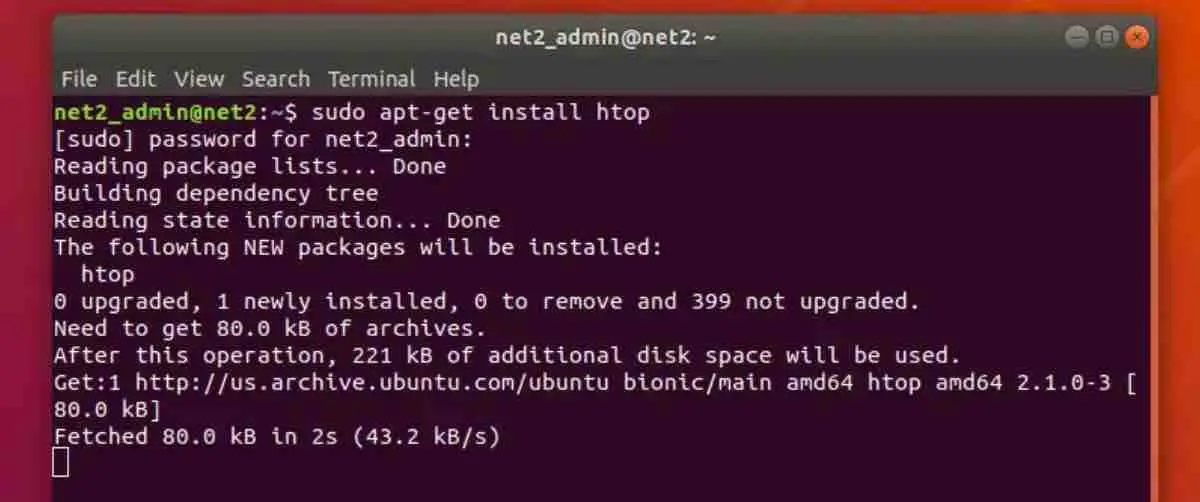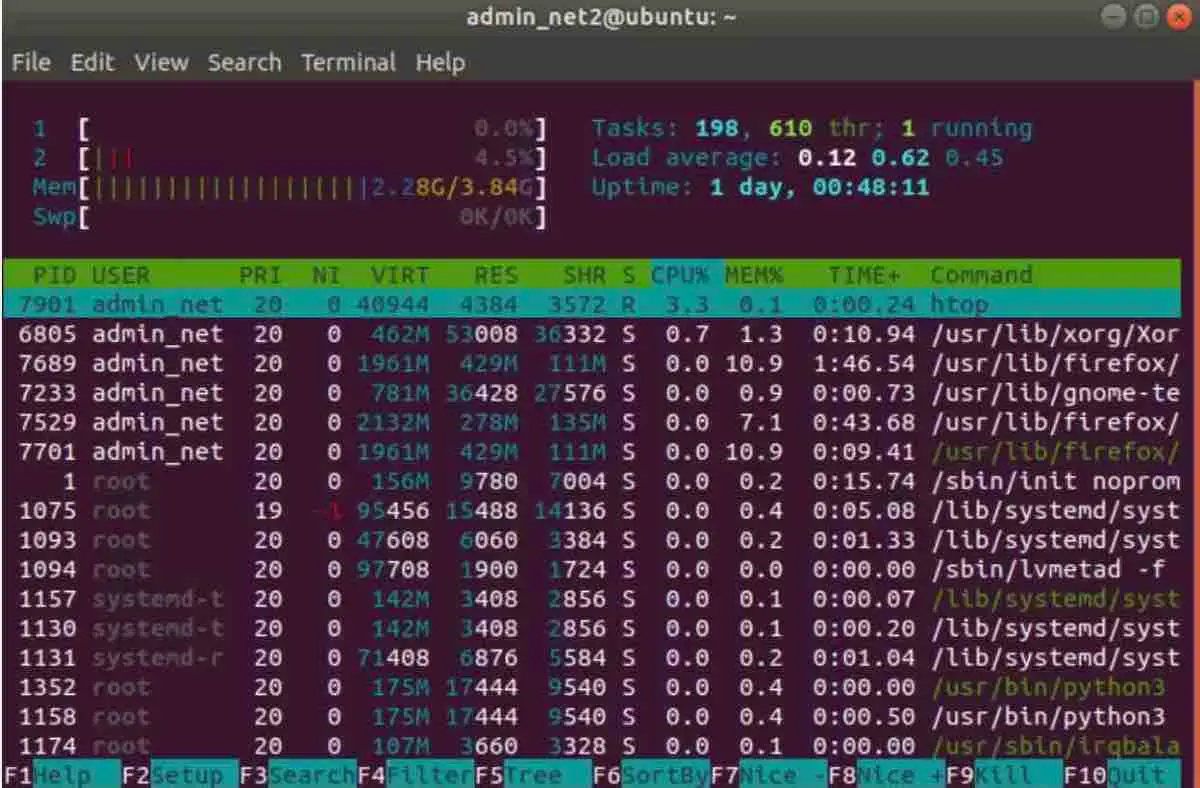If you are an Ubuntu 22.04 user, appreciating its user-friendly design and robust capabilities as a popular Linux distribution, you might be interested in monitoring your system’s memory utilization to ensure optimal performance. Tracking memory usage is crucial for identifying potential performance bottlenecks and optimizing your system’s efficiency.
This comprehensive guide will explore various techniques for monitoring memory usage in Ubuntu 22.04. We will cover both command-line tools and graphical user interface (GUI) methods, providing detailed instructions and practical tips throughout. Let’s delve into the process of effectively monitoring memory usage on your Ubuntu 22.04 system.
Checking Memory Usage Using the Command Line
Ubuntu provides several built-in command-line tools that allow you to monitor your system’s memory usage. These tools offer detailed insights into the memory consumption of different processes and applications, enabling you to identify any processes that may be using excessive memory and impacting performance.
Read: How to fix high memory usage in Linux
Utilizing the “free” Command
The “free” command is a useful utility that provides a summary of your system’s memory usage. Here’s how to use it in Ubuntu 22.04:
Open a terminal window by pressing Ctrl+Alt+T keys together or by searching for “Terminal” in the Ubuntu application menu.
In the terminal, type the following command and press Enter:
free -h

Check memory usage on Linux
The “-h” option presents the output in a human-readable format, making it easier to understand memory usage.
The “free” command will display information about your system’s memory usage, including the total installed memory (“total” column), memory currently in use (“used” column), available free memory (“free” column), memory shared between processes (“shared” column), and memory used for buffers and cache (“buff/cache” column).
Read: How to Check Disk Space in Ubuntu 22.04
You can also view memory usage in different units such as bytes, kilobytes, megabytes, or gigabytes by using specific options with the “free” command. For example, to display memory usage in gigabytes, use this command:
free -g
Utilizing the “top” Command
The “top” command is a powerful tool that provides a dynamic, real-time view of system processes, including detailed memory usage and other vital system metrics. To use the “top” command in Ubuntu 22.04, follow these steps:
- Open a terminal window to access the command line interface.
- In the terminal, type “top” and press Enter.
- The “top” command will display a continuously updating list of processes running on your system, sorted by default by CPU usage.
- To sort the processes by memory usage, press “Shift” + “M”. This action will reorder the process list in descending order based on their memory consumption.
- You can further customize the display of the “top” command using various options. For example, to view memory usage sorted by resident memory size in kilobytes, you can use the command: “top -o RES”.
- The “-o” option, followed by “RES”, specifies that the processes should be ordered according to resident memory usage.

Read: 12 Linux Basic Health Check Commands for Monitoring Performance
Leveraging the “ps” Command
The “ps” command is a versatile tool that offers valuable insights into system processes and their memory usage, making it a powerful option for Ubuntu 22.04 users. To effectively use this command, follow these simple steps:
- Open a terminal window in Ubuntu.
- Enter the following command in the terminal and press Enter:
ps aux –sort=-%mem
The “ps” command, when used with the “aux” options, provides a comprehensive listing of all processes currently running on your system. This listing includes detailed information such as the user, process ID (PID), CPU usage, and memory usage. The addition of the “–sort=-%mem” option sorts the processes in descending order based on their memory usage, allowing for quick identification of processes consuming the most memory.

Linux memory check
Upon execution, the “ps” command displays the list of processes, ordered by memory usage, with the process using the highest amount of memory at the top. This provides a clear overview of memory utilization by different processes, which is beneficial for system performance analysis and optimization.
Read: 4 Ways to Find Large Files on Linux and Free Up Disk Space
Using /proc/meminfo
To access memory-related information from the /proc file system, you can utilize the following command. These files provide real-time information about the system and kernel operations, unlike standard system files.
Here is the command to display memory information:
cat /proc/meminfo
You can use /proc/meminfo to get detailed memory usage statistics. The output of this command is similar to the vmstat command, allowing you to easily see the amount of free RAM in the MemFree result and the available free swap memory in the SwapFree result.
Checking Memory Usage via Graphical User Interface (GUI)
For users who prefer a visual approach, Ubuntu 22.04 also includes GUI tools to monitor memory usage. These tools offer a graphical representation of memory utilization, making it easier to understand the information at a glance.
Using the System Monitor Application
System Monitor is a built-in application in Ubuntu, offering a graphical user interface (GUI) that visually presents how your system’s processes and resources, such as memory, are being used. To access and use the System Monitor in Ubuntu 22.04, follow these straightforward steps:
- Locate “System Monitor” in the Ubuntu applications menu, or simply press Ctrl+Alt+Delete and select “System Monitor” from the options.
- Once the System Monitor window is open, navigate to the “Resources” tab.
- In the “Resources” tab, you will find a comprehensive overview of memory usage, including total memory, used memory, free memory, and buffer/cache memory. This information is displayed in a user-friendly graphical format for quick interpretation.
- For more detailed insights into specific processes and their memory usage, click on the “Processes” tab in the System Monitor window. Here, you will find a list of processes along with their respective memory usage, making it easy to identify any processes consuming significant memory.
Read: How to Configure Network Settings in Ubuntu 22.04
Utilizing GNOME System Monitor
If you are using the GNOME desktop environment in Ubuntu 22.04, another useful tool is available: the GNOME System Monitor. It is similar to the standard System Monitor and provides a graphical representation of system processes and resources, including memory usage. Here’s how to use it:
- Launch the GNOME System Monitor by searching for “System Monitor” in the Ubuntu applications menu or by pressing Ctrl+Alt+Delete and selecting “System Monitor” from the options.
- Once the GNOME System Monitor window is open, proceed to the “Resources” tab.
- In the “Resources” tab, you will find detailed memory usage information, similar to the System Monitor. However, it is presented in a visual graph, making it exceptionally easy to understand at a glance.
- If you require more specific information about individual processes and their memory usage, simply click on the “Processes” tab in the GNOME System Monitor window to access comprehensive details.

Read: Top 22 Essential Linux Performance Monitoring Tools for System Administrators
Additional Techniques
Besides the tools and methods discussed previously, here are some additional tips and techniques for monitoring memory usage in Ubuntu 22.04:
- Use the “htop” command: “htop” is an advanced command-line tool that offers an interactive and user-friendly way to monitor system processes, including memory usage. You can easily install “htop” by executing the following command:
sudo apt-get install htop

- After installation, you can run “htop” in the terminal to access detailed information about system processes, sortable by various criteria, including memory usage.
- Monitor for memory leaks: Memory leaks are software defects that can cause excessive memory consumption by allocating memory but failing to release it, leading to increased memory usage over time. Regularly check your system for memory leaks and address any identified issues. Tools such as “valgrind” or “memtest86+” can be useful for detecting memory leaks and optimizing memory usage.
- Close unnecessary applications/processes: Terminating applications or processes that consume excessive memory can significantly improve your system’s performance. Regularly review and close any applications or processes running in the background that are not currently needed to free up memory resources.
- Disable non-essential services: Ubuntu 22.04 may have default services running that are not necessary for your specific use case. Disabling these unnecessary services can help reduce memory usage. You can manage services and disable those you do not require using the ” systemctl” command.
- Regularly monitor memory usage: Consistent monitoring of memory usage in Ubuntu 22.04 is crucial for identifying potential issues early and taking timely corrective actions. By proactively monitoring memory usage, you can address performance or memory-related concerns as they arise.

Ubuntu memory check
Read: Monitoring system processes in Ubuntu using htop
Frequently Asked Questions (FAQs)
Here are some frequently asked questions regarding checking memory usage in Ubuntu 22.04:
Q: How to Interpret Memory Usage Information from the “Free” Command?
A: The “free” command presents memory usage in KB, MB, and GB. The “total” column indicates the total physical RAM in your system, “used” shows the currently utilized memory, “free” represents the amount of unused RAM, while “shared” and “buff/cache” refer to memory used for shared libraries and file system buffers/cache, respectively.
Q: What is “Swap” Memory and How Does It Impact Ubuntu 22.04?
A: “Swap” memory is a portion of the hard drive utilized as virtual memory when physical RAM is fully used. Ubuntu 22.04 uses swap memory as an extension when RAM capacity is exceeded. However, using swap memory is considerably slower than using RAM, which can degrade system performance. Monitoring swap memory usage and optimizing it can help prevent excessive swapping and maintain system responsiveness.
Q: Is it Possible to Upgrade My System’s Memory for Enhanced Performance?
A: Yes, definitely! Upgrading your system’s RAM can significantly improve performance, especially if you frequently encounter memory-related performance issues. Ubuntu 22.04 has recommended memory requirements, and upgrading to meet or exceed these can ensure smoother operation and better overall performance.
Conclusion
Monitoring memory usage in Ubuntu 22.04 is vital for maintaining system performance and detecting potential memory-related problems. Whether you prefer command-line tools or graphical user interface (GUI) options, Ubuntu 22.04 offers a variety of methods to check memory usage. By utilizing commands like “free” and “ps”, or GUI tools like System Monitor and GNOME System Monitor, you can easily monitor memory utilization and take necessary actions to optimize system performance. Regularly managing memory usage by closing unnecessary applications/processes, disabling non-essential services, and monitoring swap memory is also important. Remember that optimizing memory usage is part of a broader approach to system performance management. Regular system updates, software optimizations, and hardware upgrades when necessary are also important considerations for achieving optimal performance. By actively monitoring and optimizing memory usage, you can ensure a smooth and efficient user experience with Ubuntu 22.04.
If you like the content, we would appreciate your support by buying us a coffee. Thank you so much for your visit and support.



